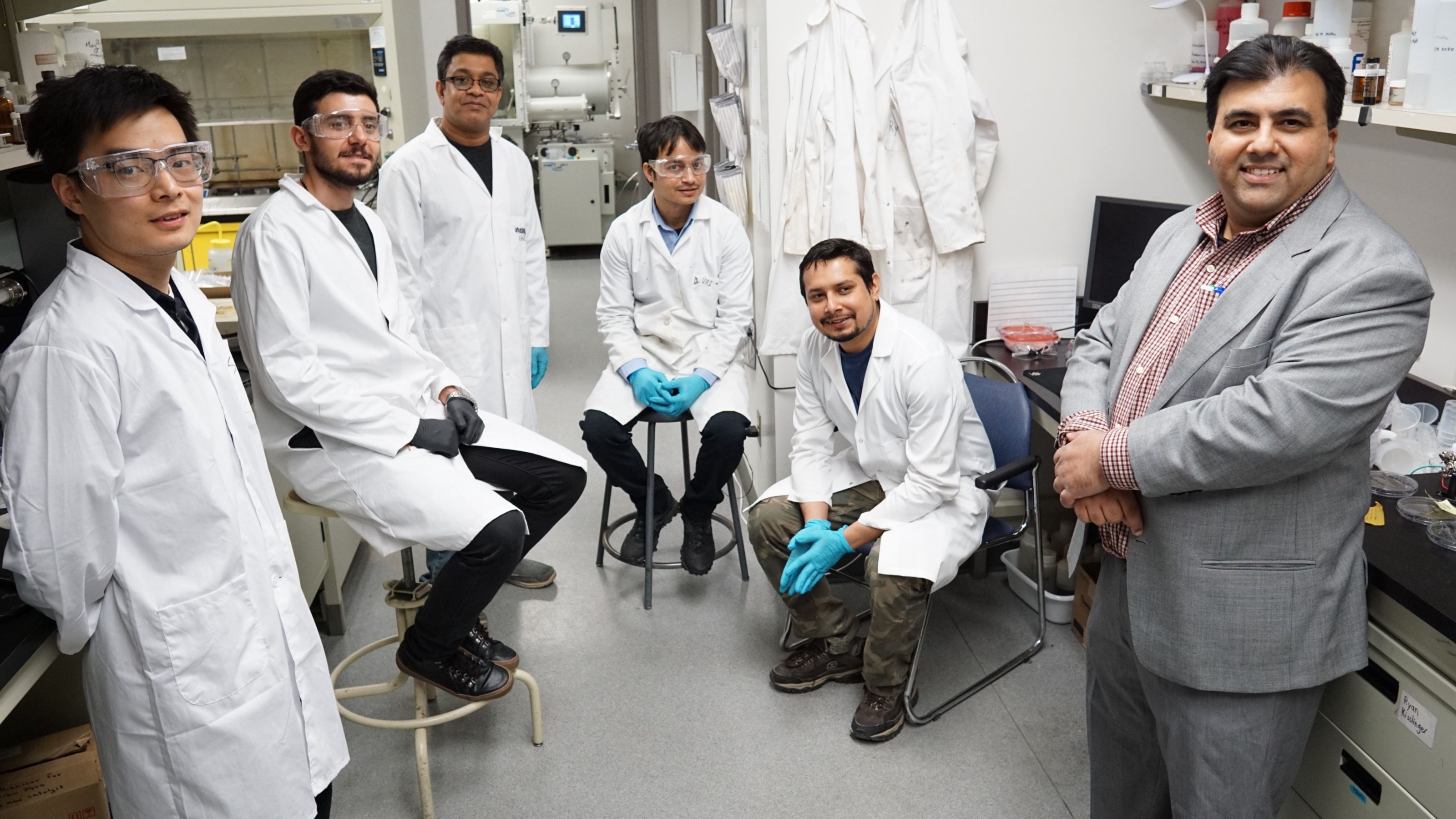Conventional wisdom may tell us that money doesn’t grow on trees, but it doesn’t say that energy can’t fall from the sky. As an engineering lab at the University of Alberta is proving, harnessing the energy freely available in solar power may simply be a matter of chemical reactions.
“It’s much more efficient to convert the energy of the sun into a portable fuel, which can be transported to wherever you wanted and then used there,” explains Electrical and Computer Engineering Professor Karthik Shankar.
One of the reasons why fossil fuels are so popular, he adds, is because they have a high energy density and they’re portable. “You can carry them to wherever you need them. That’s difficult now with solar because the battery technology isn’t there yet.”
In Shankar’s mind, the way to make solar energy more portable is to use the sun’s energy to power other reactions that produce fuels which are more easily moved.
“We’re trying to convert CO2 into value-added fuels, and to split water to generate hydrogen,” he says. They’re doing that through research into groundbreaking new catalysts.
A catalyst is a substance that improves the rate of a chemical reaction without participating in the chemical reaction. They’re common in industrial applications, and are usually used at high temperatures where heat drives the reaction, accelerating the process. But adding heat to a reaction requires energy, decreasing efficiency and increasing cost. Shankar is seeking to remove that barrier.
“In photocatalysis you use light to power the reaction, and you can perform the same reaction at room temperature.”
The question is which catalysts are best for which applications.

Shankar sees the pioneering photocatalytic work his students and researchers are doing as stepping-stones to a renewable future.
“The Arctic sea ice is thinning, we have irrefutable evidence of global climate change,” he affirms. “There’s a lot of concern from the environmental point of view regarding what to do with all the carbon being emitted in the form of carbon dioxide. Well, plasmons and graphenic semiconductors present a potential solution.”
He sees the water splitting work of the graphenic semiconductor as having incredible potential in the new clean energy economy. Another large role could be filled by the plasmonic titanium oxide catalyst, immediately applicable to sequestering carbon, transforming it into usable fuel, and mitigating the harmful effects of carbon dioxide release we currently face.
“We’ve demonstrated materials which show a lot of potential towards being used in some of these applications,” he says. “These reactions are of extraordinary interest to society.”
By harnessing solar power, he sees bright possibilities. The sun’s energy is freely available in huge amounts, and harnessing more of it through these photocatalytic reactions will lead to a cleaner, more sustainable energy future. As for what these breakthroughs might specifically mean for that future, Karthik is himself eager to find out.
“We’ll have to explore the properties of these technologies,” he says. “We hesitate to make assumptions because reality can sometimes be stranger than fiction.”
This is a condensed version of an article that originally appeared on the Future Energy Systems blog.
